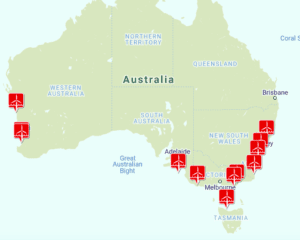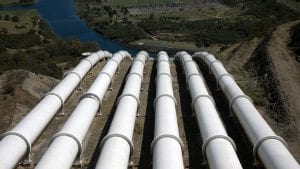Australia’s domestic air travel (and its associated greenhouse emissions) has grown markedly – especially in the last 10 years, as this graph illustrates.
Air travel (passenger km) data from the Bureau of Infrastructure, Transport and Regional Economics
We have calculated emissions using the short-haul average emissions per passenger-kilometre as used by the UK government. This takes into account radiative forcing effects of combustion at altitude, nearly doubling the climate impact of the emissions compared to Australian government estimates.
What emissions reductions are possible, just from building high-speed rail (HSR) in the Melbourne corridor? The following graph illustrates the proportion of 2011 air travel from trips that lie within the HSR corridor that is proposed in the Federal Government/AECOM modeling of the HSR route.
This is based on the observed mode share on European routes where air travel competes with high-speed rail. For a three-hour trip such as Sydney-Melbourne, this equates to about 60 per cent of trips by rail. For Brisbane-Melbourne, the roughly six-hour train journey attracts around 10 per cent of trips.
If this typical mode share were followed, roughly 18.3 per cent of domestic air travel emissions would be avoided. If more trips moved to high speed rail, up to 33.1 per cent of air travel emissions could be avoided in the case where 100 per cent of trips on the HSR corridor were taken by rail.
The radiative forcings from high-altitude combustion mean that air travel can never reach zero emissions, even when burning scarce biofuels. Several studies have now shown how 100 per cent renewable electricity could be supplied to the grid that would run the bullet trains.
Ben Courtice is media co-ordinator at Beyond Zero Emissions. Thanks to Petar Pantic and Gerard Drew from Beyond Zero Emissions for putting together much of the background data that informed this article.











